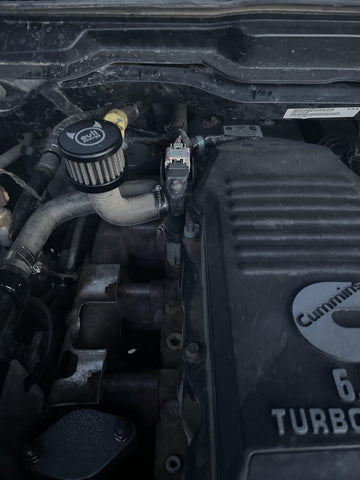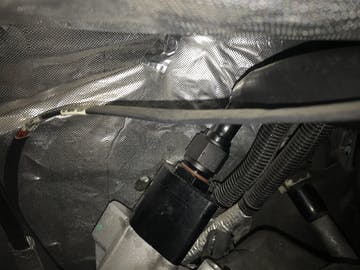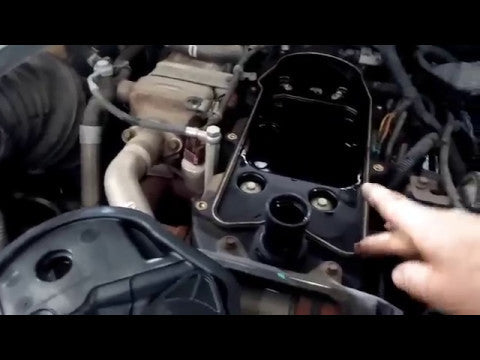Author: SPELAB Mechanical Engineer (focusing on car modification for 10 years)
You wonder, "What is PCV reroute? A must-do modification is PCV reroute; it costs about $100 but will ultimately save you thousands of dollars. It is the process by which the positive crankcase gases are diverted from returning directly to the engine through the turbo inlet and instead are sent to the atmosphere.
What does PCV reroute do Duramax?
The crankcase pressure venting will still be possible with the PCV reroute. It simply won't go into your intake, intercooler, or turbo; instead, it will be vented somewhere else (atmosphere or catch can, your choice).
What is the purpose of a PCV reroute?
The stock PCV system allows a LOT of oil to enter the intake, which causes smoke to be expelled from the exhaust. While assisting in reducing the amount of oil consumption brought on by high lateral G-forces during cornering, the PCV Reroute will still allow you to employ the PCV system's functionality.
How many miles will a LMM last?
Once you have surpassed the 150k mile mark, you should anticipate some general maintenance issues with injectors, the water pump, the fuel pump, and possibly the turbo. Overall, there is no excuse for a stock LMM to not reliably reach the 300k mile milestone.
2006 duramax pcv reroute kit
The Duramax 6.6L LLY LBZ LMM 2004.5 2010 diesel engine is compatible with the kits. Additionally compatible with the 2004–2010 GMC Sierra 2500 HD 3500 HD and the Chevy Silverado 2500 HD 3500 HD. The materials used to create the resonator plug kits are metal and rubber. Robust and resistant to harm even at high temperatures. The fitting kit consists of resonant plugs, a cover cap, seal rings, two pieces of clamps, one piece of tee, and one piece of NBR fuel line
What is ay bridge Duramax?
An improved high flow intake system for the Duramax from 2006–2010 is the LBZ/LMM 3′′ Y-Bridge Kit. The factory Y-bridge is a two-piece slip-in bridge that is poorly supported, prone to blowing apart under boost, and produces poor driving and performance.
What does a resonator delete do on a Duramax?
The turbo whistle will become very little louder after the resonator is removed. The resonator box on the intake is there solely to help dampen turbo and other intake noise, making the truck as quiet as possible.
Does LLY Duramax have EGR?
The Duramax LLY engines from 2005 and 2004.5 share the same physical components. All engines have an exhaust gas recirculation (EGR) system that is cooled, a soot trap (also known as a catalytic converter), and a closed crankcase ventilation (PCV) system.
What's better, LMM or LBZ?
Since LBZ lacks a DPF, there is no urea tank to fill. Yes, LMM has a DPF. Other than the shift in body style, that is the main significant distinction. DPF destroys the LMM's performance and mileage, but you can remove it. This is against the law, but you'll be good if you know someone who would pass it for inspection.
Does ay bridge delete the EGR?
You can remove the EGR system with this kit for racing-related purposes only. A custom 3 12" turbo inlet horn is also included to replace the plastic OEM part, and a 3′′ high flow inter cooler pipe completes the 3′′ tract from inter cooler to the engine.
Signs of a Failing or Damaged PCV Valve Hose
Poor fuel economy, the Check Engine Light turning on, engine misfires when idling, and noise from the engine are common warning signals.
Gases from the crankcase are sent to the PCV valve through the Positive Crankcase Ventilation (PCV) valve hose. From there, the engine uses it after adding it to the intake manifold. Gas won't be sent back into the engine if the PCV valve hose breaks, decreasing your car's efficiency and increasing emissions. Look out for a few signs if your PCV valve hose is damaged or deteriorating.
1. Poor fuel economy
Poor fuel economy may result from a clogged or leaky PCV valve hose. This is because a lean or rich engine situation may arise if the vacuum on the intake side of the cylinder head is unable to effectively signal the exact amount of fuel that needs to be supplied into the engine.
2. Check Engine Light comes on
One of the many causes of the Check Engine Light turning on is a faulty PCV valve hose. This is so that everything in your engine—including the PCV valve hose—can function properly. The Check Engine Light could turn on due to the PCV valve, PCV valve hose, or a combination of parts.
3. Misfiring while idling
A damaged or malfunctioning PCV valve hose can also cause your car to misfire while it is idle. This may result from the hose losing vacuum because of a leak, getting pinched, or being clogged over time as a result of accumulation. A misfire, which sounds like the engine is vibrating, is an indication that it is not operating correctly.
4. Noise from the engine
It's necessary to have your car checked up if you hear the engine hissing. The hissing noise can be coming from a leak in the PCV valve hose. You face the chance of vacuum leaks, rough running, misfires, and other issues that require more expensive repairs if you put off fixing this.









